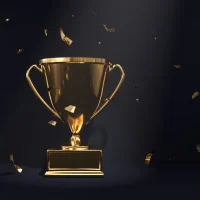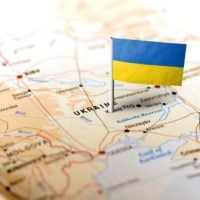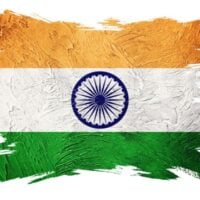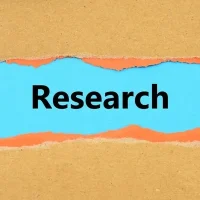Deadline: 30-Jan-23
Are you planning on making a special and innovative publication about the work of a living visual artist from the Netherlands and/or the Caribbean part of the Kingdom? Or an oeuvre publication as an artist’s reflection on his work? Perhaps the Publication grant is something for you.
The Mondriaan Fund offers Publications grants to stimulate the knowledge and dissemination of Dutch contemporary art amongst the Dutch and international audiences, thereby boosting artists’ talent development. The grants are to be used to produce publications of work by living artists from the Netherlands and/or the Caribbean part of the Kingdom, who through substance and/or form contribute to the discussion of or insight into contemporary visual art.
Grants for Publications (for Artists and Publishers) are intended for the production of special publications on the work of living visual artists from the Netherlands and/or the Caribbean part of the Kingdom.
Purpose
- The Mondrian Fund stimulates the development and visibility of visual arts and cultural heritage through financial grants. In the Netherlands, including Aruba, Bonaire, Curaçao, Saba, St. Eustatius and St. Maarten, what the marketplace fails to facilitate, or to sufficiently facilitate, in these disciplines is made possible by the Mondriaan Fund. The specific objectives of the various types of grants can be found on the Mondriaan Fund website, in the online explanations for each grant.
Objectives
- Artists and publishers can apply for this grant to fund a publication that presents the work itself and will have a small print run. They can also apply for the grant to fund an oeuvre publication as a reflection of an artist at his or her work, a first publication of emerging talent to increase the profile of his/her work nationally or internationally, or a one-time, non-monographic opinionated edition as a reflection of the artistic practice that contributes to views on contemporary art.
- Innovation is an important feature of the practice of art and therefore also of publications. For this reason, the Mondriaan Fund also contributes to technically innovative publications that use printing on demand or integrate e-publishing and/or apps in a relevant manner. Publications grants also support relevant technological innovations associated with digital media in relation to a publication.
Funding Information
- The amount of a grant for Publications will be determined per application. The maximum grant to be awarded by the Mondriaan Fund is 35% of the production costs. In the event that the publication is innovative in technical terms, the maximum grant award is 50%.
Target Groups and Areas
- Mondriaan Fund grants can be awarded to a range of target groups and for various areas or disciplines. These include visual artists, institutions, organizations, curators, art observers and commissioners of art works in the field of visual art or cultural heritage.
- Visual artists
- The Mondriaan Fund defines visual artists as all those who work professionally in one or more of the disciplines of drawing, painting, printmaking, graphic art, sculpture, (social) sculpture and installation art, conceptual or performance art, artistic research, non-traditional forms of visual art, photography, audiovisual, digital or (new) media art, visual arts applications or art in public spaces.
- Curators and art observers
- In this category of curators, art observers, critics and researchers, the Mondrian Fund assumes that the applicant is professionally active in the field of contemporary visual arts or cultural heritage. A curator or art observer carries out projects that lead to the deepening of knowledge, visibility and insight in contemporary visual art or cultural heritage in the Netherlands.
- Cultural Heritage
- The Mondriaan Fund defines cultural heritage as all that which has cultural-historical value and collectively forms the material and immaterial heritage of Dutch society. This includes objects in museum collections, archaeological finds and archives, as well as the stories, customs and habits that are associated with them.
- Not included here are the conservation and management of monuments, landscapes, the excavation of archaeological objects and activities specifically related to excavations.
- Art Platform
- The Mondriaan Fund considers art platforms to include art initiatives, collectives and visual arts organizations which do not manage collections and which focus on the public presentation of innovative contemporary visual art. The primary objective of these art platforms, which may or may not have legal entity status, is the presentation of contemporary visual arts, without a profit motive.
- Gallery
- The Mondriaan Fund understands a gallery to be a professional, economically independent space that is open to the public, in which successive (changing) exhibitions are held with the aim of selling the work of living artists from the Netherlands.
- Art Fair
- An art fair is an event where suppliers and purchasers of art, such as galleries and art buyers, meet in the presence of the work. At an art fair, galleries with their own stand or exhibition space present themselves and the living artists they represent in the most representative way possible to interested visitors.
- Applicants outside the field of visual arts or cultural heritage
- Individuals or organizations working in areas other than the visual arts or cultural heritage who nevertheless believe that their activities significantly contribute to these fields can apply to the Mondriaan Fund, provided they adequately describe the visual arts or cultural heritage aspects of their work.
Eligibility Criteria
- Grants for Publications may be awarded to visual artists and publishers, who are free to apply for them either jointly or individually.
- The publication must relate to one or several artists who are active in the visual arts and who are part of the professional visuals arts field in the Netherlands and/or the Caribbean part of the Kingdom.
- The artist to whom the publication relates must have been a professional visual artist for at least 4 years, or must have taken a 3-year visual arts degree with a visual arts curriculum at a university of the arts and have worked as a professional visual artist for at least 1 year since then.
- A Grant for Publications cannot be applied and used while attending education at institutions, such as bachelor’s and master’s degree programmes or participating in programmes at academic or post-academic institutions.
- If a publisher is involved in the project, the artist (or artists) must be given a fitting wage, which may be included in the budget as a ‘costs of production’ debit item. The artist’s wage may be listed among the ‘costs of production’, but must be paid by the publisher.
- If the work is not to be published by a vanity publisher, the grant application must include a publisher’s pledge to publish the work.
- If the grant application is submitted by the publisher, the application must include a pledge issued by the artist.
- If the work is to be published by a vanity publisher, the grant may include some compensation for the time the artist devoted to getting the publication ready for publication (part-time job). The grant application is more likely to be successful if the applicant has raised some funds itself by means of a crowd-funding campaign (e.g. through voordekunst.nl).
- Publications about historical subjects and/or historical developments are not eligible for a Grant for Publications. Nor are artists’ books. Artists’ books are considered autonomous works of art, which are eligible for an Artist Project grant.
- The contribution for technically innovative publications cannot be awarded for applications of printing techniques, bookbinding and/or the use of alternative types of paper. For this purpose, you can apply for the grant for 35% of the production costs.
For more information, visit Mondriaan Fund.









































